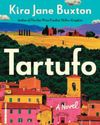
The most exquisitely developed characters in the world won't make an impact unless those characterizations are clear and vivid in the pages of your story.
Bringing characters to life on the page comprises a myriad of context and detail that, if done well, may seem invisible to readers, but which work together to create a full, cohesive picture in their minds of who your characters are, who they have been, and who they are becoming.
It's not an exaggeration to suggest that character is revealed in every moment, every choice, every reaction.
Every detail in your story can be used intentionally to create and convey character and character arc.
Elements of Characterization
We learn who characters are the same way we get to know people in real life: We are introduced to them, we get a first impression, we see how they act and behave, what they do, how they react and interact, and little by little, we form a composite, ever-deepening picture of who they are.
Every thought, preference, motivation, preoccupation, behavior, interaction, etc., can convey something about them: what they drive, drink, wear, eat, listen to, watch, do, love, hate. Their mannerisms, habits, verbiage and dialect, vocabulary, grooming, demeanor, affect, expressions. Their actions and inaction. What they say and how they say it, and when they say it, and why they say it-and what they don't say. Their ideology, worldview, beliefs. Their illusions and assumptions.
But creating complete, fully fleshed characters doesn't happen believably and effectively in swaths of info dump or long passages of description or information. Like an Impressionist painting, characters take on depth, dimension, and texture with countless layered brushstrokes of detail, and every single moment of the character on the page is a chance for you to lay in another stroke of color.
この記事は Writer’s Digest の March - April 2024 版に掲載されています。
7 日間の Magzter GOLD 無料トライアルを開始して、何千もの厳選されたプレミアム ストーリー、9,000 以上の雑誌や新聞にアクセスしてください。
すでに購読者です ? サインイン
この記事は Writer’s Digest の March - April 2024 版に掲載されています。
7 日間の Magzter GOLD 無料トライアルを開始して、何千もの厳選されたプレミアム ストーリー、9,000 以上の雑誌や新聞にアクセスしてください。
すでに購読者です? サインイン

What Is Your Story Question?
Revision and editing advice to take your first draft to the next level.

Writing for the People We Hope to Become
Elisa Stone Leahy's new middle-grade novel, Mallory in Full Color, tackles the in-between moments of adolescence, when who we are and who we want to become collide.

Creating Community
Whether hot off the presses or on the shelves for years, a good book is worth talking about.

Pat Barker
The Booker Prize-winning author of Regeneration shares the role characters play in developing novel ideas and explains what appeals to her about reimagining mythology.

How to Write in Different Genres
Emiko Jean and Yulin Kuang share tips and strategies for how they successfully write in different genres and mediums.

The Shortest Distance Between Two Points
Ten tips for writing a novel with 100-word stories.

Mayfly Marketing
How to sell your novel in a short-attention-span world.

"You'll be a great essay".
How to write six types of personal essays by finding the funny in your life.

The Idea Factory
Tired of staring at an empty screen? Unlock your inner fiction generator with these surprising inspiration techniques.

Seinfeld Was Right: That's a Story
Use mundane moments from everyday life to create stories that pack a punch.